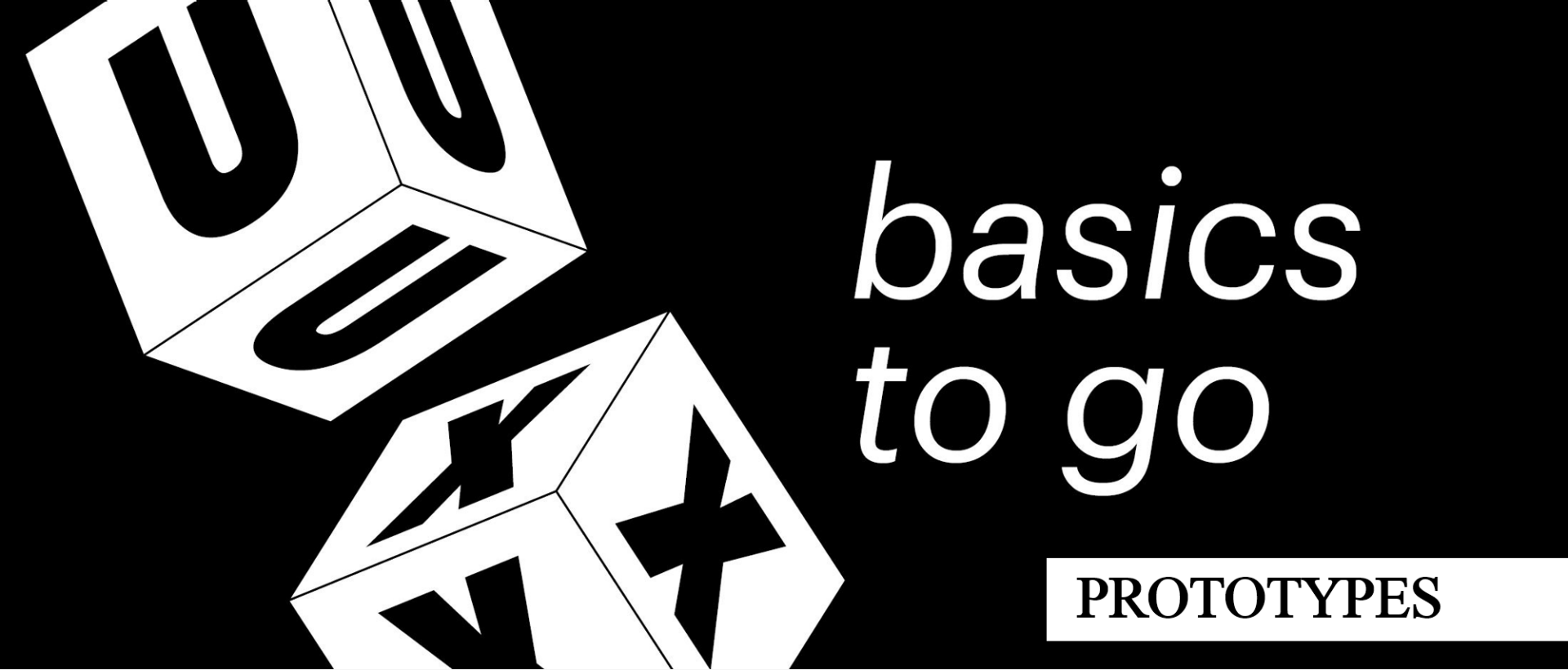Wir haben leider kein passendes Ergebnis gefunden.
UX Basics to go: The Prototype


Today we talk about... Prototypes and testing
In the category UX basics to go we present different user experience and usability terms. Exactly the right thing for everyone who wants to acquire basic knowledge about UX very quickly.
Prototype… what are you thinking of when hearing that term? Cars? Or maybe robots?
That is all true, but prototyping also plays an important role in UX research.
According to the official definition of UXQB, a prototype is…
… a representation of all or part of an interactive system that, although limited in some way, can be used for analysis, design and usability evaluation.
Apropos interactive system for usability novices among you we have even two UX basics to go today: UXQB describes an interactive system as a combination of hardware, software and services that users interact with in order to achieve specific goals.
Prototypes come in many shapes
Did you know that already a rudimental construction made out of paper, scribbles and post-its can be used as prototype for usability testing?
There are different types of prototypes – these differ in their fidelity, i.e. depth of detail and functionality. On the following picture you can see a so called low-fidelity prototype.
This is primarily supposed to test functionally, less to test visual. Low-fidelity prototypes can be updated within a few moments. New ideas can be implemented quickly, problems identified by users can be solved immediately.
On the far right you can see a high-fidelity prototype that already resembles the final interactive system a lot.
Do you also notice the many colors, style elements and interaction possibilities? Accordingly, this prototype requires significantly more time and costs.
Which prototype is more useful?
Which prototype fits best, depends entirely on the stage of development of the website/ app and on the individual goal of the client. On the one hand, the earlier an interactive system is tested for usability and functionality, the better – as changes can still be made relatively low cost at this stage. On the other hand, a high-fidelity prototype helps the user to immerse into the real context of use. He already encounters problems here which can occur during the later use of the website.
Want to know more about UX?
Do you want to go directly deeper into the subject of usability? Maybe you are interested in our Facit Digital User Experience seminar. In this two-day training you can acquire all basic knowledge around usability and user experience.
